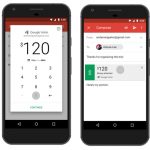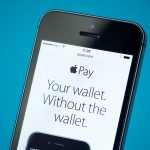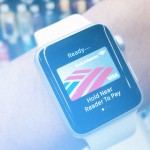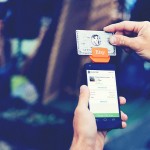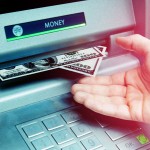What’s On Your Phone? Probably Not Your Wallet
At a grandiose event atop the World Trade Center, Mastercard unveiled new technology that will enable partnered banks and retailers to send and accept money through a mobile phone. The announcement “will have marked an important moment in our history, and we hope, our industry,” said Mastercard’s Craig Vosburg.
But actually, the affair, for all its grand pronouncements, porcelain dishware, and servings of cheesecake, is not likely to prove such a turning point.
For one, the technology, which uses near field communication to transmit payment information from a mobile device to a terminal, isn’t new. iPhone maker Apple first popularized this technology in the fall of 2014 and since then, there have been many tag-along launches. Early rivals included Android Pay, Samsung Pay, and the now defunct CurrentC and Softcard. About a month ago, Visa launched a white label app for its partner banks that would enable them to provide their consumers with a tap-to-pay feature.
It’s not just tap-to-pay in stores. Mastercard and Visa also want to be the payment of choice in mobile apps, since an increasing number of people are shopping on their smartphones. In 2015, mobile commerce comprised 30% of all electronic sales in the U.S., according to Internet Retailer’s annual report, and that percentage is expected to grow rapidly. In January, Forrester Research noted that sales on mobile phones alone grew 53% year over year. Sales on tablets tend to be even stronger.
The reason for the sudden surge in mobile payment options, from Visa and Mastercard and by proxy consumer banks, is that traditional financial players are being pressured by innovative fintech startups trying to scoop up their business. The banks and credit companies figure that since they already have the bulk of customers, all they have to do is provide them with these cool new tools, and they’ll be able to maintain their chunk of the consumer financial market.
Unfortunately, that’s not how technology works. In order to provide the best consumer experience, you need to own all aspects of the new paying experience, and no one—neither the banks nor the upstart startups—does. This technological conundrum has precipitated the current traffic jam of mobile wallets and payment methods. The worst part? They’re not actually serving anyone.
Barring a very select few instances, no one has been able to make the case for using a phone in lieu of a credit card at physical stores. The argument could be made that tap-to-pay is a lot faster than running the new chip credit cards that recently rolled out in the states, but it would be a weak one. Even if it could be made, not all merchants accept NFC, making paying with your phone less top-of-mind for consumers. Credit cards just work, and that’s why people use them.
Furthermore, consumers are limited in how they can use mobile payments. For instance, iPhone users can only use Apple Pay to pay in stores, regardless of whether or not they would prefer to use Masterpass or any other NFC-enabled payment app to pay in stores. Of course they can use QR code-based payment apps, but those only work in even more selective instances, as I’ll explain later. The iPhone maker doesn’t give the needed hardware access to its competitors in order to make their products available.
And herein lies the rub. As a customer, you can’t expect to use any one of these solutions everywhere. Every single one of the mobile payment options available today is limited in some way. Apple Pay may be available both on mobile and desktop, but it’s only available on its own devices (so if you have an iPhone and a Chromebook, you have to use a different payment application for each device). Android Pay can be used in store, in mobile apps, and mobile web, but doesn’t yet extend to desktop. Meanwhile, you can only use PayPal at select merchants online, in-app, and in-store. Same goes for Masterpass and Visa’s white-label banking app. Meanwhile, Samsung Pay says it can be used anywhere a credit card is accepted, but can’t be used for mobile or e-commerce.
In order to ditch plastic for digital, consumers would have to sign up with a multitude of apps and use them on a case-by-case basis. A small online merchant might insist on PayPal, while a bigger merchant like Amazon wants you to set up an exclusive account with it. That leaves customers with a kluge of payments apps that don’t work together or in any seamless coherent way.
The only place where mobile payments seem to be making a dent in the real world is in merchant-branded apps. Roughly 21% of Starbucks consumers in the U.S. use its rewards app when paying at the register, according to Bloomberg. Meanwhile, lunchtime salad bar SweetGreen projected that 50% of its sales in 2016 would come through its mobile app, Nation’s Restaurant News reported earlier this year. These apps are the digital manifestation of those little scannable reward cards you used to stack on your keychain, except now you can pay with them with a QR code. But these apps are exclusively used by super users—die-hards that expect to be making purchases multiple times a week or month. People download these apps selectively, because no one wants a different app or separate account for every store they shop at.
Until tech companies or banks can truly provide seamless payments, there is too much noise in mobile payments for consumers to want to get involved.
Fast Company , Read Full Story
(7)




